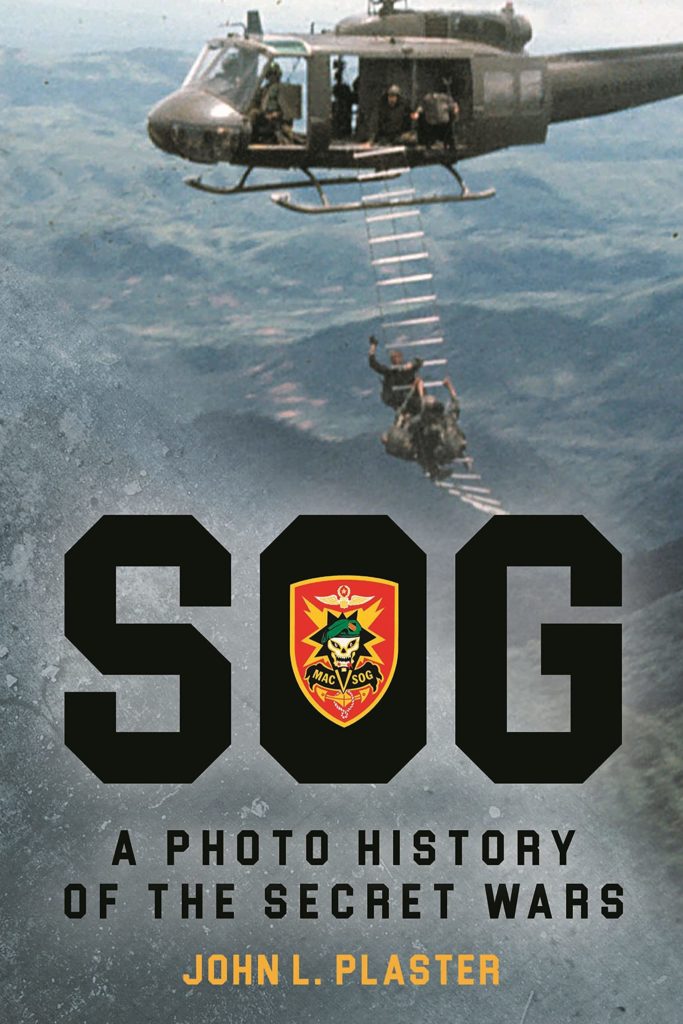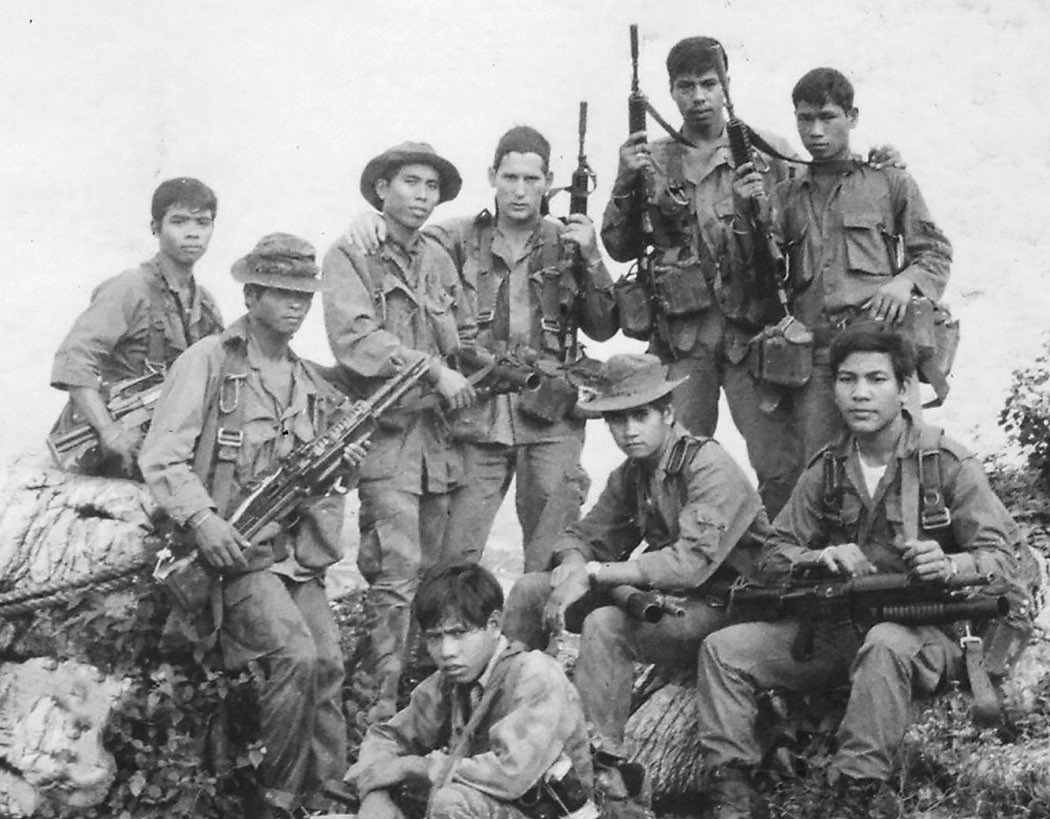Some might think it impossible to create a photographic history of a top-secret Special Forces covert operations unit, yet that is exactly what retired Army Maj. John L. Plaster has done in his magnificent work “SOG: A Photo History of the Secret Wars.”
An expert on the unit, Plaster qualified as a paratrooper and was a Green Beret weapons and communications noncommissioned officer. He served three one-year tours in Southeast Asia with Military Assistance Command, Vietnam-Studies and Observations Group, or MACV-SOG, and led reconnaissance teams behind enemy lines in Laos and Cambodia. After the war, he co-founded the National Guard Sniper School in 1983 and twice served as chief of competition for the U.S. and European Military and Police Sniping Championships.
Plaster holds a bachelor’s degree in journalism and deftly applies both his writing skills and military experience in telling the story of SOG, a highly classified organization consisting of volunteers from the U.S. military’s most elite special operations units, including the Green Berets, Navy SEALs, Air Force Special Ops squadrons and Marine recon units. In the Special Forces component, Green Berets led small teams of fighters from militias of Vietnamese or ethnic minorities on secret missions.

SOG: A Photo History of the Secret Wars
by John L. Plaster, Casemate, 2022, $32.95
This post contains affiliate links. If you buy something through our site, we might earn a commission.
SOG reported directly to the Joint Chiefs of Staff and sometimes the president. Charged with black ops missions, it had no photo archive, no staff historian and no media coverage. Despite those constraints, Plaster has created a comprehensive account of SOG illustrated with more than 700 photos taken “in wartime by the very men who performed SOG’s amazing missions,” along with maps and captured enemy documents. Plaster gathered material from hundreds of his comrades who managed to take personal snapshots in the field or preserved copies of government photos. Where photos did not exist, Plaster used artist drawings to fill in gaps and even built replicas of equipment when necessary to complete the historical record.
His book chronicles the history of SOG in detail while delving into fascinating discussions of tactics used to deceive and confuse enemies; jungle warfare and camouflage practices; techniques to escape and evade North Vietnamese pursuers; recon operations; helicopter insertion methods and much more. Plaster fleshes out every aspect of the SOG experience and includes detailed descriptions of aircraft, weapons and equipment. The book is well-organized and features a helpful glossary and index.
What stands out most about Plaster’s work is his attention to SOG’s most important factor: the men who served. He weaves together stories of individuals and their courage with deep affection, humility and respect.
Readers will be touched by accounts of quiet heroism such as that of door gunner Terry O’Kelley, who sustained severe burn injuries to pull a comrade from beneath the wreck of a burning Huey helicopter yet did not complain about his own wounds. Plaster also pays tribute to the sacrifice of 1st Lt. George K. Sisler, killed by an enemy sniper in 1967 after a stunning display of courage. Sisler, posthumously awarded the Medal of Honor, was the first SOG member and first military intelligence officer to receive the medal.
This reviewer was particularly moved by Sisler’s words in a letter to his wife describing the bond between brothers in arms on the battlefield.
“It is a sight to behold to see two men who have fought side-by-side in a hard battle, each knowing the other saved his life,” Sisler wrote. “It is reflected in the unspoken word, the boyish and sometimes rough expressions passed between men who have faced such things and won … I think it is beyond description.” The lieutenant, who would make the ultimate sacrifice, stated in the same letter: “I don’t regret one bit being here.”
The book also shares the stories of numerous brave warriors listed as missing in action and whose fate remains unknown. “SOG operatives displayed the purest kind of selfless courage,” Plaster writes.
The author, who donated sets of the photos to the John F. Kennedy Special Warfare Center and the U.S. Army Center of Military History, expressed hope that the book will educate readers, including today’s youth, about the qualities that make true heroes.
Plaster’s book is a military history masterpiece. Reading it would significantly enhance the knowledge of anyone interested in the history of the Vietnam War and Special Forces and, most important, would inspire anyone with examples set by men demonstrating unbelievable courage.
historynet magazines
Our 9 best-selling history titles feature in-depth storytelling and iconic imagery to engage and inform on the people, the wars, and the events that shaped America and the world.






